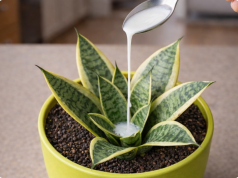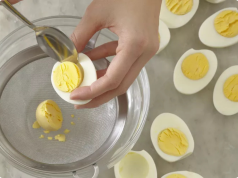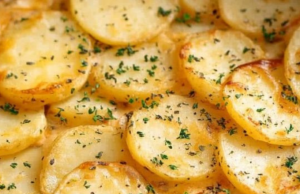Food waste is a growing concern worldwide, with millions of tons of perfectly good food being discarded every year simply because it wasn’t stored properly. The good news? With a few simple tricks, you can extend the shelf life of your groceries, keep fruits and vegetables fresh, and ensure that your pantry staples remain safe and tasty for longer. Proper food storage not only saves money but also helps preserve nutritional value and reduces unnecessary waste. Here’s how to do it right.
Why Proper Food Storage Matters
Storing food correctly is about more than just keeping it fresh—it’s also about safety. Poorly stored food can spoil quickly, lose its flavor, or even become unsafe to eat due to bacterial growth or contamination. By following these tips, you’ll maximize the lifespan of your groceries while maintaining their quality.
General Tips for Storing Food
- Transport Groceries Properly
The journey from the store to your home plays a big role in food longevity. Use insulated bags, especially for perishable items like meat, dairy, and frozen goods. Avoid leaving groceries in a hot car for too long, as heat accelerates spoilage. - Choose the Right Containers
Opt for durable, non-toxic materials like stainless steel, aluminum, or glass. These are safer and more effective than plastic wrap, which can interact with fatty or acidic foods (like cheese or tomatoes). Always use airtight containers to prevent air exposure, which speeds up spoilage. - Replace Wrapping Regularly
Paper used to wrap fish, produce, or baked goods should be changed frequently to avoid moisture buildup, which can lead to mold or bacterial growth. - Organize by Expiration Dates
Practice the “first in, first out” rule: place items with earlier expiration dates at the front of your fridge or pantry, and those with later dates toward the back. This prevents forgotten items from going bad. - Know Your Appliances
Different parts of your fridge have different temperatures and humidity levels. Use the crisper drawers for fruits and vegetables, the top shelf for ready-to-eat foods, and the bottom shelf for raw meats to prevent cross-contamination.
Storage Tips by Category
1. Pantry-Stable Foods
Pantry items like grains, pasta, canned goods, and spices require cool, dry conditions to stay fresh.
- Keep Them Airtight: Transfer dry goods like rice, flour, and cereal into airtight containers to protect them from pests and moisture.
- Store in a Cool, Dark Place: Heat and light can degrade the quality of pantry staples. Avoid placing them near appliances like ovens or stoves.
- Label and Date: For bulk items or homemade mixes, label containers with purchase or preparation dates to track freshness.
2. Perishable Foods
Foods like dairy, meat, eggs, and fresh produce need careful handling to prevent spoilage.
- Dairy Products: Store milk, yogurt, and cheese in the coldest part of the fridge (usually the back). Cheese should be wrapped in wax paper or parchment before being placed in a container to allow it to breathe while staying fresh.
- Meat and Seafood: Keep raw meat on the bottom shelf of the fridge to prevent drips onto other foods. For longer storage, freeze meat in vacuum-sealed bags or freezer-safe containers.
- Eggs: Store eggs in their original carton rather than the fridge door, where temperature fluctuations occur.
3. Fresh Fruits and Vegetables
Produce has varying needs based on its natural characteristics—some thrive in humid environments, while others prefer drier conditions.
- Leafy Greens (Lettuce, Spinach): Rinse, dry thoroughly, and store in a breathable bag or container lined with paper towels to absorb excess moisture.
- Berries: Don’t wash berries until you’re ready to eat them, as moisture encourages mold. Store them in their original packaging or a ventilated container.
- Apples: Apples release ethylene gas, which can speed up ripening in nearby produce. Store them separately in the fridge to avoid affecting other fruits and vegetables.
- Root Vegetables (Carrots, Potatoes): Remove rubber bands or ties from carrots and store them in water-filled jars in the fridge. Potatoes and onions should be kept in separate, cool, dark places to prevent sprouting.
4. Frozen Foods
Freezing is an excellent way to preserve food for months, but proper technique is key.
- Use Freezer-Safe Bags: Squeeze out as much air as possible before sealing to prevent freezer burn.
- Portion Control: Divide large quantities of food into smaller portions for easy thawing.
- Label Everything: Include the date and contents on each package to ensure older items are used first.
Additional Tricks to Make Food Last Longer
- Revive Wilting Veggies
Submerge limp lettuce, celery, or herbs in ice water for 10–15 minutes to rehydrate them. Pat dry before storing again. - Banana Hack
Wrap banana stems tightly in plastic wrap to slow down the release of ethylene gas, which causes over-ripening. - Herb Preservation
Treat fresh herbs like flowers: trim the stems and place them in a jar with a little water. Cover loosely with a plastic bag and refrigerate. - Citrus Care
Store citrus fruits like lemons, limes, and oranges in the fridge to extend their freshness. - Tomato Tip
Never refrigerate tomatoes—they lose flavor and texture in cold temperatures. Instead, store them stem-side down at room temperature.
The Bottom Line
Proper food storage is both an art and a science. By understanding the unique needs of each type of food and implementing these practical strategies, you can significantly reduce waste, save money, and enjoy fresher, healthier meals. Whether you’re organizing your pantry, managing your fridge, or freezing leftovers, taking the time to store food correctly pays off in countless ways.
So next time you unpack your groceries, remember: a little effort goes a long way in making your food last longer and taste better!










